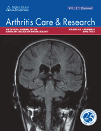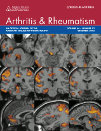ACR:矩形风险模型预测RA患者快速放射学损害的效果不佳
2013-05-28 ACR dxy
应用于这一观察队列时,所有模型均表现出次最佳效能 矩形风险模型被建议用来作为类风湿关节炎(RA)患者快速放射学损害(RRP)预测的一种工具,但是,该模型应用于RA的经验有限。针对这一情况,来自美国波士顿马萨诸塞州布里格姆和妇女居屋医院和挪威奥斯陆Diakonhjemmet医院的SIRI LILLEGRAVEN等人进行了一项研究,该研究将3种风险模型应用于一个观察队列,分析风险模型的效能。研究结果
矩形风险模型被建议用来作为类风湿关节炎(RA)患者快速放射学损害(RRP)预测的一种工具,但是,该模型应用于RA的经验有限。针对这一情况,来自美国波士顿马萨诸塞州布里格姆和妇女居屋医院和挪威奥斯陆Diakonhjemmet医院的SIRI LILLEGRAVEN等人进行了一项研究,该研究将3种风险模型应用于一个观察队列,分析风险模型的效能。研究结果在线发布在2013年4月的《关节炎护理及研究》(Arthritis Care & Research)杂志上。作者发现,在这一观察性RA患者队列研究中,矩形风险模型应用于早期RA的临床试验, 对RRP预测能力有限。
该研究是一项包括478位RA患者的观察队列,受试者均按手部放射学检查和必要的预测变量进行分类。RRP被定义为每年Sharp/van der Heijde积分≥5单位。患者被放置在合适的矩形内,对应一个RRP预测风险。研究者分别计算某事件的平均预测概率,综合判断改善,Hosmer-Lemeshow检验和C statistics。
研究结果如下,平均年龄59岁(四分位数间距[IQR] 50-66岁),平均病程是12年(IQR 4-24年),平均肿胀关节数是6(IQR 2-13),84%患者是女性,86%患者基线时已存在关节侵蚀。12%的患者(271中32位)在基线时接受合成的改变病情的抗风湿药物(DMARDS)治疗,10%的患者(271中21位)出现RRP并接受生物DMARDs治疗。该人群中,大多数预测变量成偏态分布。应用于这一队列时,所有模型均表现出次最佳效能,C statistics:0.59 (模型A),0.65 (模型B)和0.57 (模型C);Hosmer-Lemeshow卡方P值:0.06(模型A),0.005 (模型B)和0.05 (模型C)。
研究发现,在这一观察性RA患者队列研究中,矩形风险模型应用于早期RA的临床试验, 对RRP预测能力有限。

Performance of matrix-based risk models for rapid radiographic progression in a cohort of patients with established rheumatoid arthritis.
OBJECTIVE
Matrix-based risk models have been proposed as a tool to predict rapid radiographic progression (RRP) in rheumatoid arthritis (RA), but the experience with such models is limited. We tested the performance of 3 risk models for RRP in an observational cohort.
METHODS
Subjects from an observational RA cohort with hand radiographs and necessary predictor variables to be classified by the risk models were identified (n = 478). RRP was defined as a yearly change in the Sharp/van der Heijde score of ≥5 units. Patients were placed in the appropriate matrix categories, with a corresponding predicted risk of RRP. The mean predicted probability for cases and noncases, integrated discrimination improvement, Hosmer-Lemeshow statistics, and C statistics were calculated.
RESULTS
The median age was 59 years (interquartile range [IQR] 50-66 years), the median disease duration was 12 years (IQR 4-23 years), the median swollen joint count was 6 (IQR 2-13), 84% were women, and 86% had erosions at baseline. Twelve percent of patients (32 of 271) treated with synthetic disease-modifying antirheumatic drugs (DMARDs) at baseline and 10% of patients (21 of 207) treated with biologic DMARDs experienced RRP. Most of the predictor variables had a skewed distribution in the population. All models had a suboptimal performance when applied to this cohort, with C statistics of 0.59 (model A), 0.65 (model B), and 0.57 (model C), and Hosmer-Lemeshow chi-square P values of 0.06 (model A), 0.005 (model B), and 0.05 (model C).
CONCLUSION
Matrix risk models developed in clinical trials of patients with early RA had limited ability to predict RRP in this observational cohort of RA patients.
本网站所有内容来源注明为“梅斯医学”或“MedSci原创”的文字、图片和音视频资料,版权均属于梅斯医学所有。非经授权,任何媒体、网站或个人不得转载,授权转载时须注明来源为“梅斯医学”。其它来源的文章系转载文章,或“梅斯号”自媒体发布的文章,仅系出于传递更多信息之目的,本站仅负责审核内容合规,其内容不代表本站立场,本站不负责内容的准确性和版权。如果存在侵权、或不希望被转载的媒体或个人可与我们联系,我们将立即进行删除处理。
在此留言











#放射学#
58
#ACR#
61
#风险模型#
60